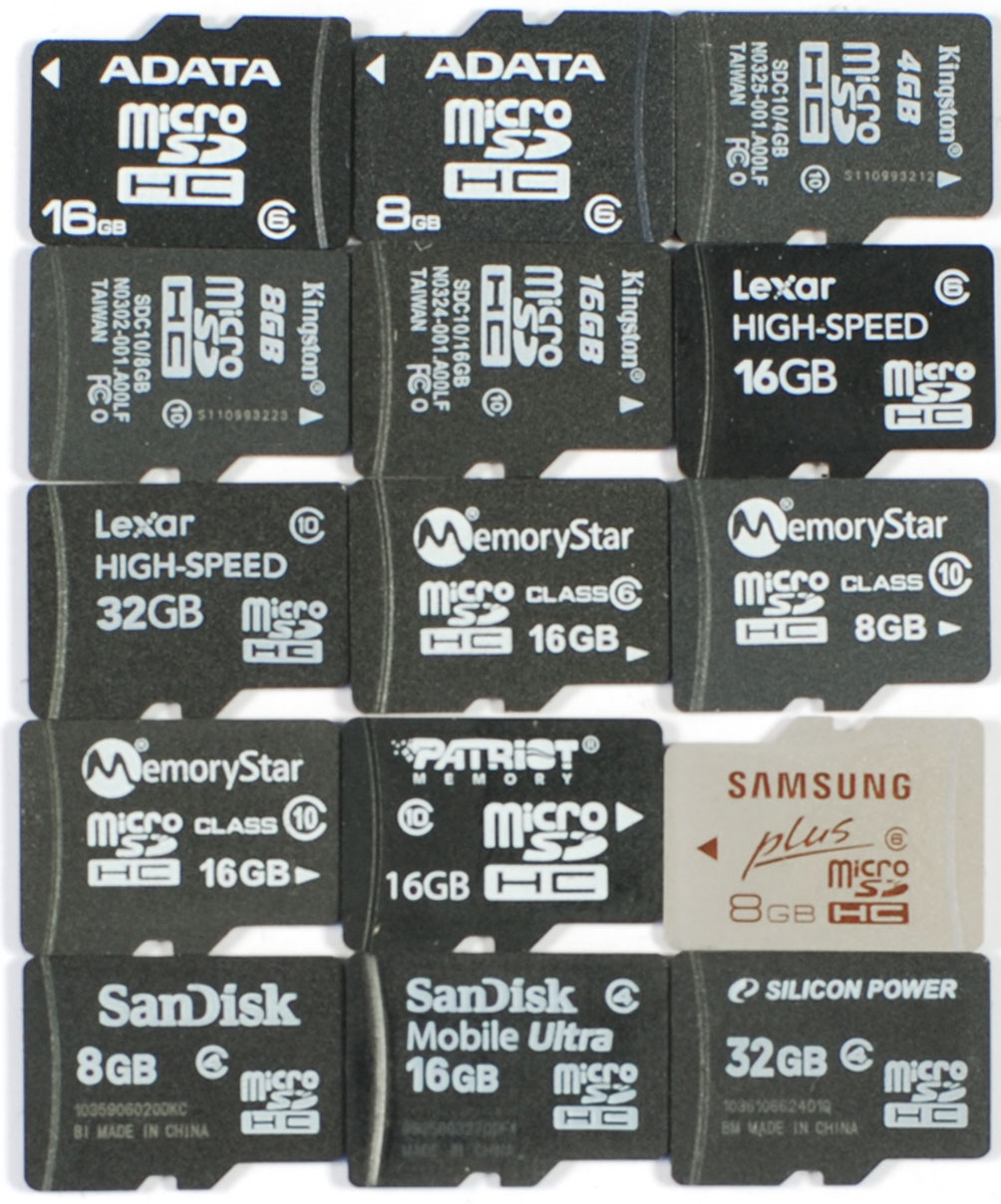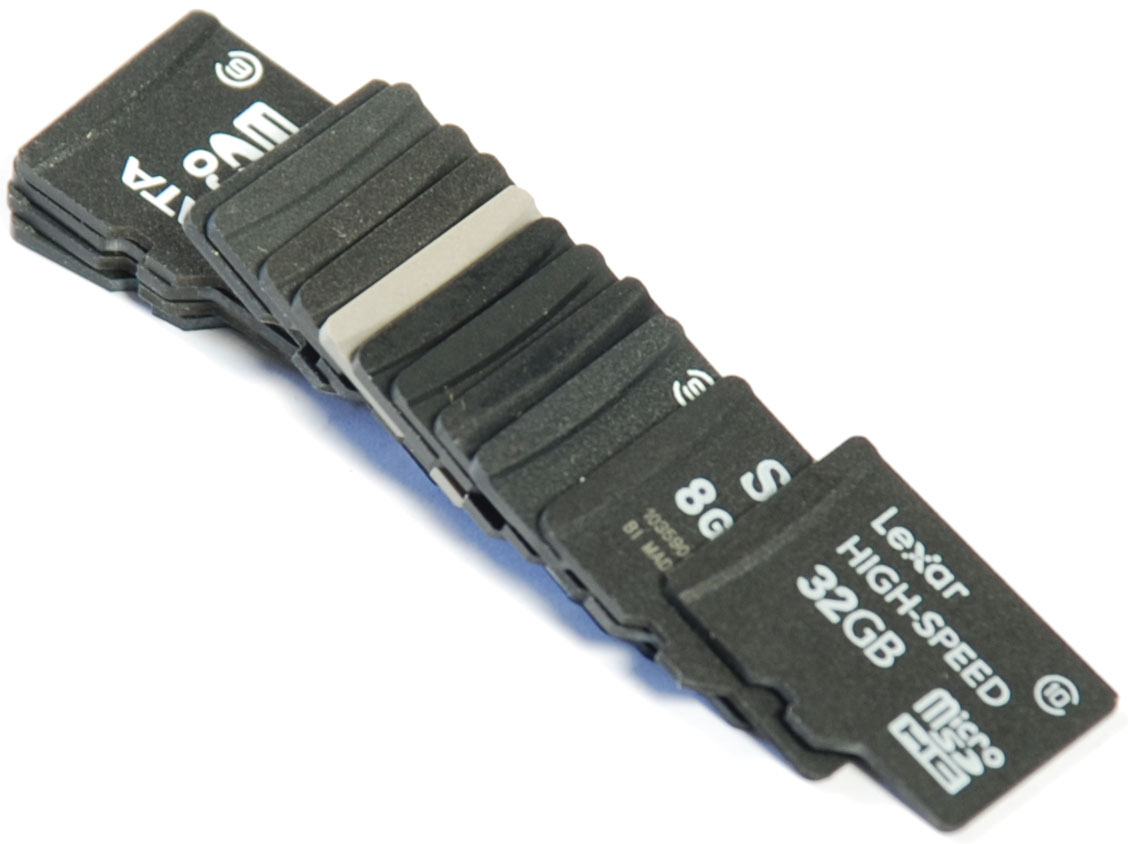Round-Up: 15 microSDHC Cards, Benchmarked And Reviewed
With rated write performance as high as 10 MB/s and capacities as high as 32 GB, there's plenty of choice in the microSDHC marketplace. Do the contenders actually hit their performance targets? Interestingly, some of them are actually quite a bit better!

microSDHC Cards For Mobile Devices
Fast memory cards are needed not only in professional equipment like DSLR cameras, but they're increasingly being used in consumer devices like compact cameras, camcorders, MP3 players, hand-held game consoles, and cell phones, too. This accelerating uptake is caused by the rapidly increasing number of features of these devices. The more features, the higher the demands on the memory card. For example, consider recording and playing back HD video on a smartphone. For stutter-free operation, significant data transfer speeds are required. In order to go beyond video snippets a few seconds long, the storage capacity of a memory card also needs to be sufficiently large.
Considering those criteria and adding compatibility, reliability, and robustness, the SD card quickly emerges as the memory card of choice, which also helps to explain its 80% market share.
The physically smallest variant of the SD card is the microSD card, measuring a mere 11 mm x 15 mm x 1 mm (0.43” x 0.59” x 0.04”). Add a host adapter, and a microSD or microSDHC card can be used like a SDHC card.
For this comparison test, we're focusing on the microSDHC subcategory of the microSD form factor, which offers much larger capacities, and thus more versatility in multimedia applications. While a microSD card tops out at 2 GB due to its FAT16 file system, a microSDHC card can store up to 32 GB on its FAT32 file system, depending on the model.
We asked all major memory card manufacturers to submit samples of their microSDHC-based products. We received a wide range of cards, with capacities ranging from 4 GB to 32 GB, and thus covering the whole range of the microSDHC specification. We also noticed plenty of different performance points. SD cards are grouped into several performance classes, which denote the minimum recording rate of the cards. The lowest performance class, Class 2, stores data at a minimum of 2 MB/s. Our test candidates, however, start at performance Class 4, which features a worst-case write speed of 4 MB/s. Class 6 cards achieve at least 6 MB/s, while Class 10 cards switch up the rating a bit, pushing 10 MB/s non-fragmented sequential writes.
Get Tom's Hardware's best news and in-depth reviews, straight to your inbox.
Current page: microSDHC Cards For Mobile Devices
Next Page Adata microSDHC Class 6 (Class 6, 8/16 GB)-
sayakbiswas interesting read, but there should hv been more 32gb sticks.....they r quite affordable nowadays...Reply -
BulkZerker sayakbiswasinteresting read, but there should hv been more 32gb sticks.....they r quite affordable nowadays...Reply
I wouldn't consider $40+ (shipped) affordable. Also you have to think that Tom's isn't necessarily buying these cards for personal or business use. 9x out of 10 these cards are donated by their respective companies. Or a warehouse such as Tiger Direct/Newegg. -
CaedenV last summer I needed some memory sticks for my video camera and decided on a pair of 16GB PNY Professional SD cards which I have been very happy with. Read maxes out my USB port, and writing is consistently above 19MB/s during file transfers.Reply -
In your test setup, I could not find a description of the interface that you use to connect these cards to the PC.Reply
-
CaedenV BulkZerkerI wouldn't consider $40+ (shipped) affordable. Also you have to think that Tom's isn't necessarily buying these cards for personal or business use. 9x out of 10 these cards are donated by their respective companies. Or a warehouse such as Tiger Direct/Newegg.$40 IS affordable for fast and dense media. You do not put fast huge SD cards in a cell phone or cheap camera, you put them in high end still cameras, and budget (but quality) video cameras. Considering when I picked mine up the nearest competition for fast SD cards were in the $80+ range, and I picked up 2 at that price I would say that $40 is quite good. If you have a cheaper camera, there is much cheaper (but still good) media out there.Reply -
stridervm Would it be possible that Sandisk gave you a mislabeled Class 4 Micro SD card? Quite suspicious that they would have Class 4 cards that would perform like at least a class 6 one....Reply -
The_Trutherizer I've always wondered how good these things would do in a RAID configuration. Say you got a Raid controller capable of handling 32 drives and you found a way to hook up microSD cards to it. What performance would you get? And would it be economically viable at all?Reply -
sayakbiswas BulkZerkerI wouldn't consider $40+ (shipped) affordable. Also you have to think that Tom's isn't necessarily buying these cards for personal or business use. 9x out of 10 these cards are donated by their respective companies. Or a warehouse such as Tiger Direct/Newegg.Reply
40$ for 32gb MicroSDHC is affordable when you consider the fact that 64gb MicroSDXC cards costs 280$+. I am employing a Nikon D7000 dslr when im thinking about these cards.
-
theprov Can i assume that a "32 gb class 10 kingston micro sd" perform at least as much as a 16 gb? I'm buying a 32 gb soon, and i don't want to find out bad surprises....Reply -
happyballz Should have tested them all in one size or in two different sizes (one small one big).. performance does vary, and sometimes significantly because of design mistakes between the sizes etc.Reply
On a side note what is the deal with tom's being such crappy optimized webpage? I open 5-6 tabs and everything crawls to a molasses-slow on my laptop. I can open 15-20 tabs in other sites no problem.

